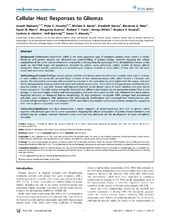| dc.contributor.author | Najbauer, Joseph | en_US |
| dc.contributor.author | Huszthy, Peter Csaba | en_US |
| dc.contributor.author | Barish, Michael E. | en_US |
| dc.contributor.author | Garcia, Elizabeth | en_US |
| dc.contributor.author | Metz, Marianne Z. | en_US |
| dc.contributor.author | Myers, Sarah M. | en_US |
| dc.contributor.author | Gutova, Margarita | en_US |
| dc.contributor.author | Frank, Richard T. | en_US |
| dc.contributor.author | Miletic, Hrvoje | en_US |
| dc.contributor.author | Kendall, Stephen E. | en_US |
| dc.contributor.author | Glackin, Carlotta A. | en_US |
| dc.contributor.author | Bjerkvig, Rolf | en_US |
| dc.contributor.author | Aboody, Karen S. | en_US |
| dc.date.accessioned | 2013-04-04T10:56:55Z | |
| dc.date.available | 2013-04-04T10:56:55Z | |
| dc.date.issued | 2012-04-23 | eng |
| dc.Published | PLoS ONE 7(4): e35150 | eng |
| dc.identifier.issn | 1932-6203 | |
| dc.identifier.uri | https://hdl.handle.net/1956/6479 | |
| dc.description.abstract | Background: Glioblastoma multiforme (GBM) is the most aggressive type of malignant primary brain tumors in adults. Molecular and genetic analysis has advanced our understanding of glioma biology, however mapping the cellular composition of the tumor microenvironment is crucial for understanding the pathology of this dreaded brain cancer. In this study we identified major cell populations attracted by glioma using orthotopic rodent models of human glioma xenografts. Marker-specific, anatomical and morphological analyses revealed a robust influx of host cells into the main tumor bed and tumor satellites. Methodology/Principal Findings: Human glioma cell lines and glioma spheroid orthotopic implants were used in rodents. In both models, the xenografts recruited large numbers of host nestin-expressing cells, which formed a ‘network’ with glioma. The host nestin-expressing cells appeared to originate in the subventricular zone ipsilateral to the tumor, and were clearly distinguishable from pericytes that expressed smooth muscle actin. These distinct cell populations established close physical contact in a ‘pair-wise’ manner and migrated together to the deeper layers of tumor satellites and gave rise to tumor vasculature. The GBM biopsy xenografts displayed two different phenotypes: (a) low-generation tumors (first in vivo passage in rats) were highly invasive and non-angiogenic, and host nestin-positive cells that infiltrated into these tumors displayed astrocytic or elongated bipolar morphology; (b) high-generation xenografts (fifth passage) had pronounced cellularity, were angiogenic with ‘glomerulus-like’ microvascular proliferations that contained host nestin-positive cells. Stromal cell-derived factor-1 and its receptor CXCR4 were highly expressed in and around glioma xenografts, suggesting their role in glioma progression and invasion. Conclusions/Significance: Our data demonstrate a robust migration of nestin-expressing host cells to glioma, which together with pericytes give rise to tumor vasculature. Mapping the cellular composition of glioma microenvironment and deciphering the complex ‘crosstalk’ between tumor and host may ultimately aid the development of novel anti-glioma therapies. | en_US |
| dc.language.iso | eng | eng |
| dc.publisher | Public Library of Science | eng |
| dc.rights | Attribution CC BY | eng |
| dc.rights.uri | http://creativecommons.org/licenses/by/2.5/ | eng |
| dc.title | Cellular Host Responses to Gliomas | en_US |
| dc.type | Peer reviewed | |
| dc.type | Journal article | |
| dc.description.version | publishedVersion | en_US |
| dc.rights.holder | Copyright 2012 Najbauer et al. | |
| dc.identifier.doi | https://doi.org/10.1371/journal.pone.0035150 | |
| dc.identifier.cristin | 959418 | |

